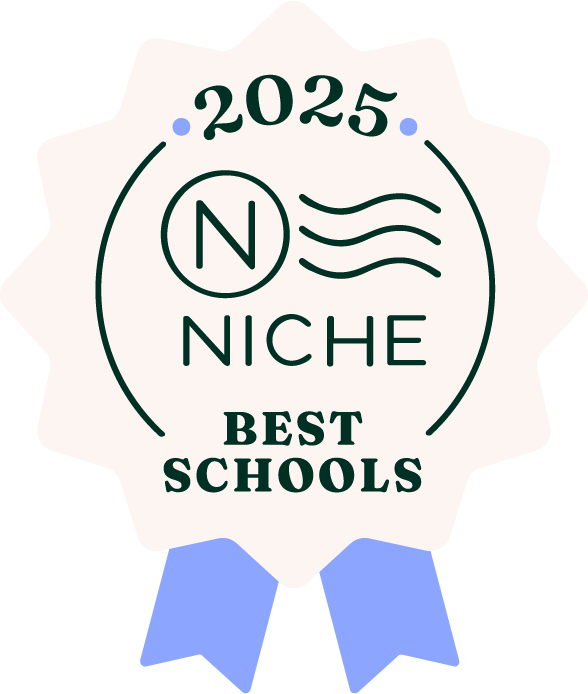“Turn it, and turn it, and turn it, and turn it, and turn it, and turn it, Compost Cake!”
“Pile it high, pile it high, pile it high, Compost Cake!”
If you’ve heard this song about compost all around campus this fall and winter, it’s because we got new compost bins in the Primary and Lower Elementary gardens! Why did we get new bins, you might ask? Two reasons:
- We needed more space for the volume of organic waste we produce (a combination of garden waste and food scraps from the students' lunches and snack preparation)
- We wanted to try a more interactive, faster, and developmentally appropriate compost model for our younger students.
So what did we get? If you visit the Primary and Lower Elementary gardens, you’ll see some giant green cylinders sitting on a rotating axis. These compost bins are called tumblers. Tumbler compost models allow students of all ages to spin the compost (working those gross motor skills), in addition to speeding up the composting process. In our old bins, it took at least a year for our food waste and garden scraps to decompose fully, we'll make finished compost in as little as two weeks. Cheers to that!
What is Compost?
Compost is the product that’s left after organic matter has fully decomposed. It’s also called humus. Human-made compost comes from carefully mixing food and garden waste materials — ingredients high in either nitrogen or carbon — and placing them in an environment where they can decay. When the decaying process has gone well, we put the finished compost, or humus, back into the garden soil and grow healthier plants by improving soil fertility.
Why do we compost at Greensboro Montessori School?
For starters, compost has a longer ground-life than other fertilizers. It lasts longer in soil than crop residues or animal manures that degrade rapidly here in the humid Southeast. This longevity makes for healthier plants and food crops. Composting also reduces our waste throughout campus. By diverting organic matter from the landfill and into a closed-loop cycle, we transform our “waste” into a fertilizer for our gardens and food for the microorganisms that live in the soil beneath us. We also save money by eliminating the need and associated cost of additional soil fertility inputs. And let's not forget, composting is just plain fun!
Can you think of any other reasons to compost? Maybe, that by doing it, we are feeding the worms our Toddlers so adore? That it’s a responsible use of resources? That it's a project-based way to teach science? Share your thoughts with us! And, if you want to learn more, please join us at our next Community Garden Workday for more composting tips and tricks with our environmental education faculty. We’d love to have you.
If you're interested in learning more about the science of composting, read this article from Live Science.
 About the Author
About the Author
Eliza Hudson is Greensboro Montessori School's lead environmental educator. Eliza holds her bachelor's degree in biology from Earlham College in Richmond, Ind. She has built and tended school gardens, taught hands-on cooking lessons and connected local farms to school programs working for FoodCorps. Prior to joining Greensboro Montessori School in 2014, Eliza was a classroom and after-school assistant at the Richmond Friends School, a farm intern at a family-owned farm in Ohio, and served as assistant director at a summer day camp in an urban community garden in Durham.
Greensboro Montessori School has taught environmental education since 1995 and has been permaculture gardening on its campus since 1997.


